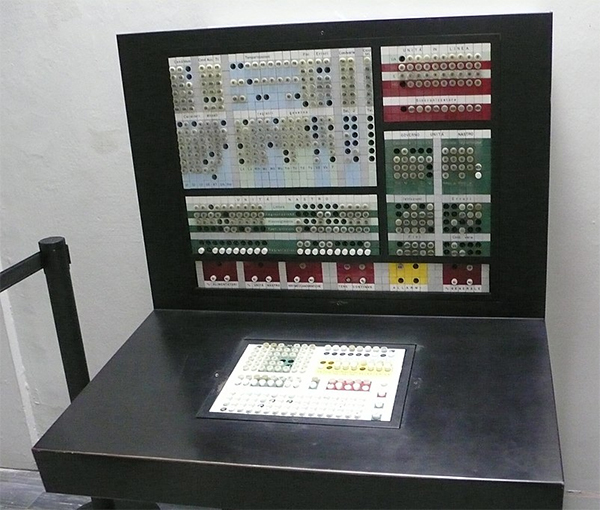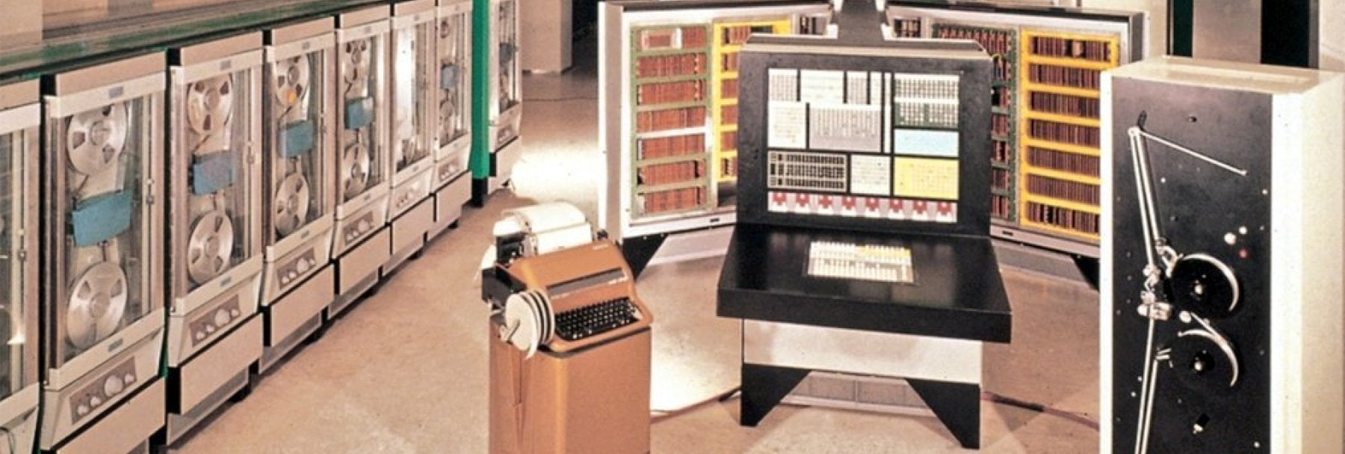2021 marked the 60th anniversary of the death of Mario Tchou, the Olivetti engineer who designed the Elea 9003, the first Italian computer, who died in a car crash at the age of only 36. However, the circumstances around his death, a car crash, remain suspicious. Indeed, a year earlier, Adriano Olivetti, Mario Tchou’s boss, also died in suspicious circumstances. When Tchou died in a car accident on the morning of November 9, 1961, he was on his way from Milan to Ivrea to discuss the new project with management. But on the motorway near Santhià, his Buick Electra had a fatal head-on collision with a van. In the following years, various conjectures were made about the accident, not the least of which was a CIA assassination to eliminate the threat t Olivetti possibly represented for the Americans. While Tchou’s family has always stressed the lack of evidence of foul play in the accident, the fact that shortly afterward, Olivetti’s electronic division was dismantled and sold to General Electric in 1964 has only served to fuel speculation.
In both cases, the suspicions derive from the work that Tchou and Olivetti were pursuing and the technological edge that they had achieved over their closest competitor. Meryle Secrest published The Mysterious Affair at Olivetti in 2021. She reopens the case of the circumstances surrounding Adriano Olivetti’s mysterious death, reconstructing the political and international intrigues, including the potential role played by the CIA under pressure from US business interests in ‘procuring’ the demise of Olivetti, Tchou, and the Elea 9003 computer they were developing, the first Italian-made computer. It disappeared – or not so euphemistically ‘fell’ – while being taken to Rome on a truck. Secrest got access to many declassified CIA documents and has been able to piece together news. She has also interviewed relatives and friends of Adriano, reconstructing like a jigsaw puzzle, the facts that led Olivetti, an emerging technology giant, toward its demise. Secrest’s investigative effort does have some merit, considering what Olivetti had become and what Adriano Olivetti and Mario Tchou had achieved.
The Elea Machine

Introduced in 1959, ELEA was ahead of its time in technology and design. It was the fruitful collaboration that started in 1955 between the University of Pisa and Olivetti for the creation of a scientific computer that led to the establishment of the Olivetti design center headed by Mario Tchou. Tchou, born in 1924, was the son of a Chinese diplomat who worked at the embassy of imperial China at the Vatican. He received an Italian education at the Liceo Classico (the classical high school, learning Latin and ancient Greek), electrical engineering at Sapienza University in Rome, and then specializing in the United States in Washington DC in 1947. After moving to New York, Tchou completed a master’s degree at the Polytechnic Institute of Brooklyn with a thesis on ultrasonic diffraction. In 1954, in New York, Tchou met Adriano Olivetti, who had been persuaded by physicist and nuclear pioneer Enrico Fermi to take an interest in the electronics market. Thus Tchou returned to Italy to work on the Olivetti/Pisa project, where he led the design and assembly of the Elea 9001 (aka ‘macchina zero’) transistor computer in 1957.
The ELEA name was an acronym for Elaboratore Elettronico Aritmetico. It was also inspired by the ancient Greek town of Elea (near present-day Salerno) that was home to the Eleatic school, a pre-Socratic school of philosophy whose most famous representative was Parmenides. In 1958 came the Elea 9002. The Pisa lab moved to the Milan area in 1958, where Adriano Olivetti presented the final Elea prototype, Elea 9003, to the President of the Italian Republic Giovanni Gronchi. The Elea 9003 was the first entirely transistor-based Italian computer – and certainly one of the first fully transistorized computers in the world. The Elea 9003 was also the only one of the series to be actually marketed, in around 40 examples, the first of which (Elea 9003/01) was installed at Marzotto di Valdagno (VI), while the second (Elea 9003/02) was sold at the Banca Monte dei Paschi di Siena. Olivetti would produce 180 units of the Elea 9003 but then sold the Electronics Division to General Electric due to financial difficulties.
The Mystery and Context
On February 27, 1960, Adriano Olivetti was in Milan. The Olivetti group, a progressive company reflecting the socialistic leaning of the Olivetti family, pioneered and applied many of the principles now known as ESG (environmental, social, governance), also deliberately paying employees higher than average wages while encouraging them to pursue education and cultural enrichment. Olivetti, the company, represented a veritable challenge to the more cut-throat US enterprise model. It was a challenge to American-style capitalism itself. And this could have been seen as a problem in Washington and where John Foster Dulles dominated the CIA of the Cold War: Olivetti had acquired the US-based Underwood typewriter company. And Adriano Olivetti intended to assemble his company’s new jewel, the Elea 9003 computer, in the United States, from where it would be marketed worldwide. Mr. Olivetti took a train to Switzerland for personal reasons. But, he would never make it to his destination. Officially, he died from a heart attack aboard the train. But an autopsy was never performed, and the actual cause of death has never been confirmed. In 2013, a documentary film broadcast by Rai (Italy’s state radio and TV broadcaster) entitled “Olivetti — the strength of a dream” went on air. During production, while some scenes were being shot in Ivrea (Olivetti headquarters), Michele Soavi nephew of Adriano, producer of the documentary, was approached by an elderly gentleman who said to him: “I was Adriano’s guard who went around the gardens of the villa at night, I know he was murdered.”
Meryle Secrest notes that in the late 50s, the CIA developed a gun that fired poison darts, perfect for use in a corridor and designed to simulate a heart attack. William Colby, director of the Agency in 1975, showed it during a hearing before the US Senate Committee that oversaw intelligence activities. The gun fired a small dart containing a lethal toxin that was odorless, tasteless, and difficult to detect in an autopsy. Why Olivetti?
Olivetti preceded Apple even in the marketing department with its Olivetti stores, where customers could try out their products.
But more than the marketing or the US-business-threatening, technology of the Elea machine that concerned the CIA and other foreign entities…Adriano Olivetti had managed to establish a company that was a kind of humanist utopia. Had he succeeded in fully realizing the vision that was well in progress by the late 1950s, he would have altered the industrial and entrepreneurial face of Italy and possibly the entire west. His company, famous throughout the world for its typewriters, would revolutionize the relationship between the factory and the worker. He rejected the suffocating “Taylorist” model focused on driving productivity and maximizing the pace of work. Rather, Olivetti’s vision was attentive to the needs of workers (reduced hours, paying higher than average or legally mandated wages, and providing social welfare on all levels). Olivetti had created a predecessor to the start-up Silicon Valley of the office foosball game and seven different types of cappuccino, offering not just bells and whistles but more time off for vacations and no cultish cut-throat structure.
Adriano Olivetti, was without a doubt, one of the greatest entrepreneurs of the twentieth century — an entrepreneur who truly tried to change the very idea of what capitalism was about long before the propaganda of ESG and political correctness invaded the halls of the current Western corporate culture. An uncle of mine who worked as a researcher at Olivetti for most of his career told me that in the 1970s, many at Olivetti were convinced the CIA had liquidated Mario Tchou and Adriano Olivetti. They were putting Olivetti and Italy a step ahead of the others. Their demise — and the dismantling of the Elea division that followed — meant the end of Italy’s brief computer supremacy. Now, Italy is a ‘passive’ consumer of high tech, having lost its once avant-garde research role.


